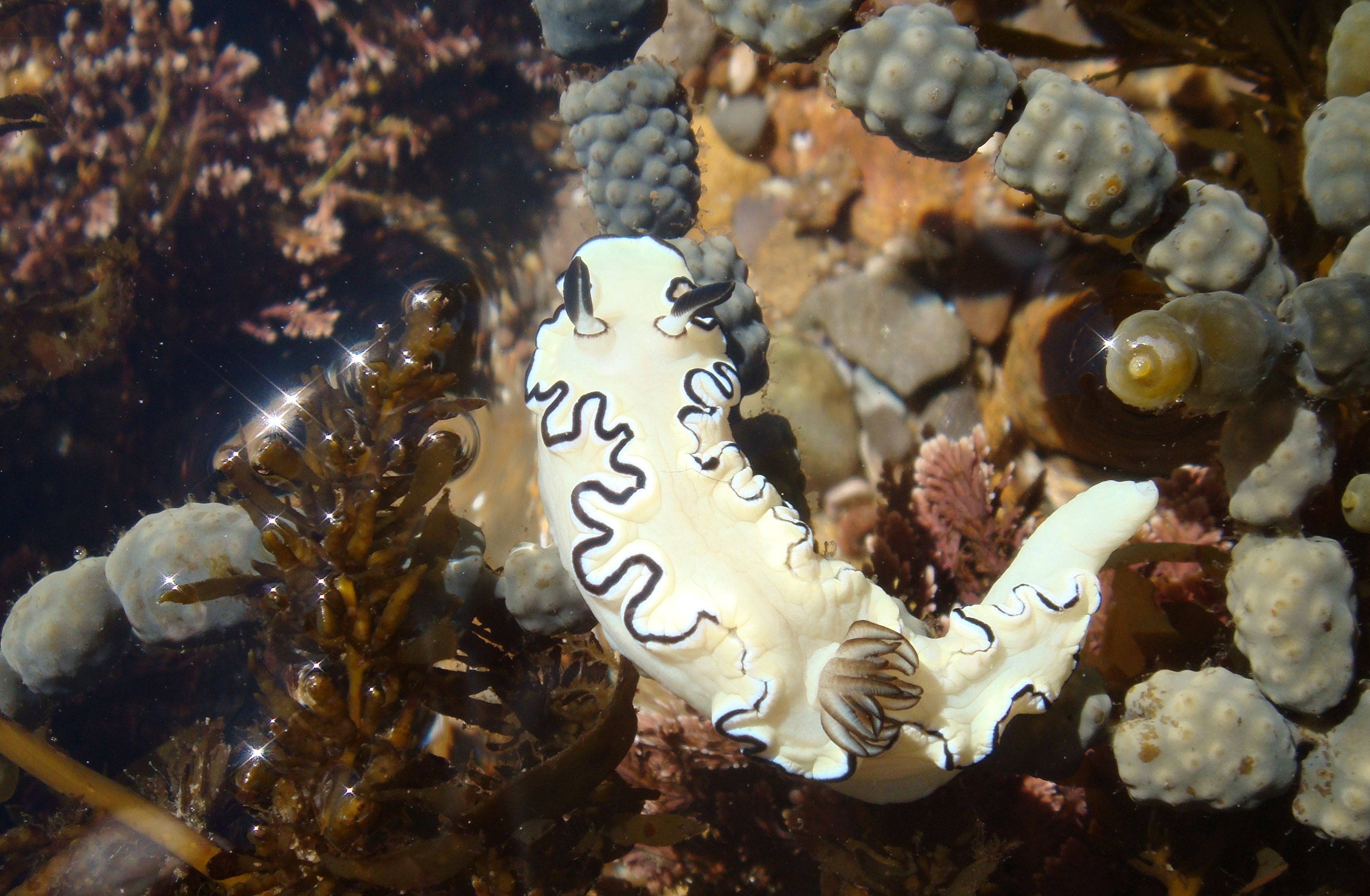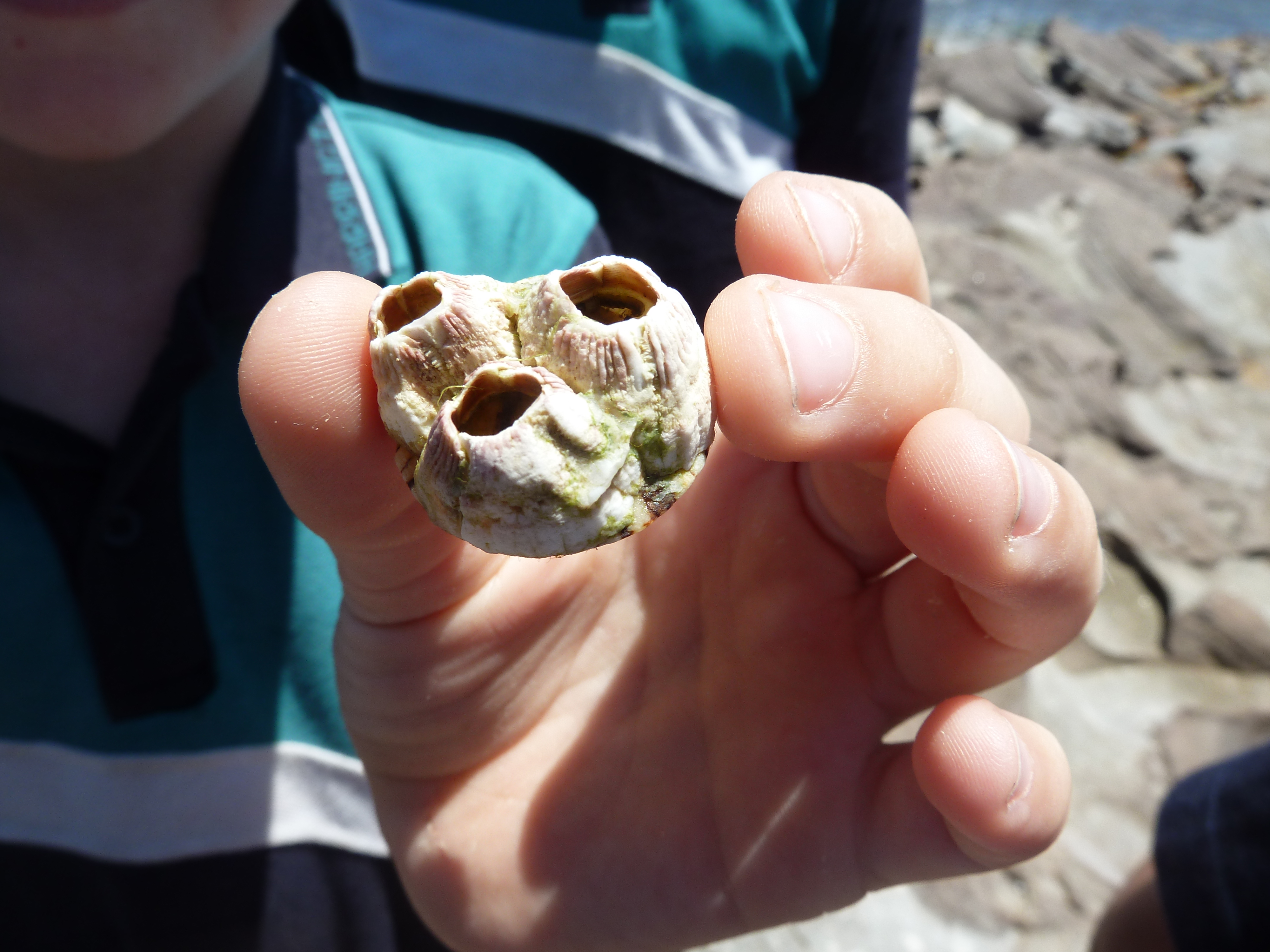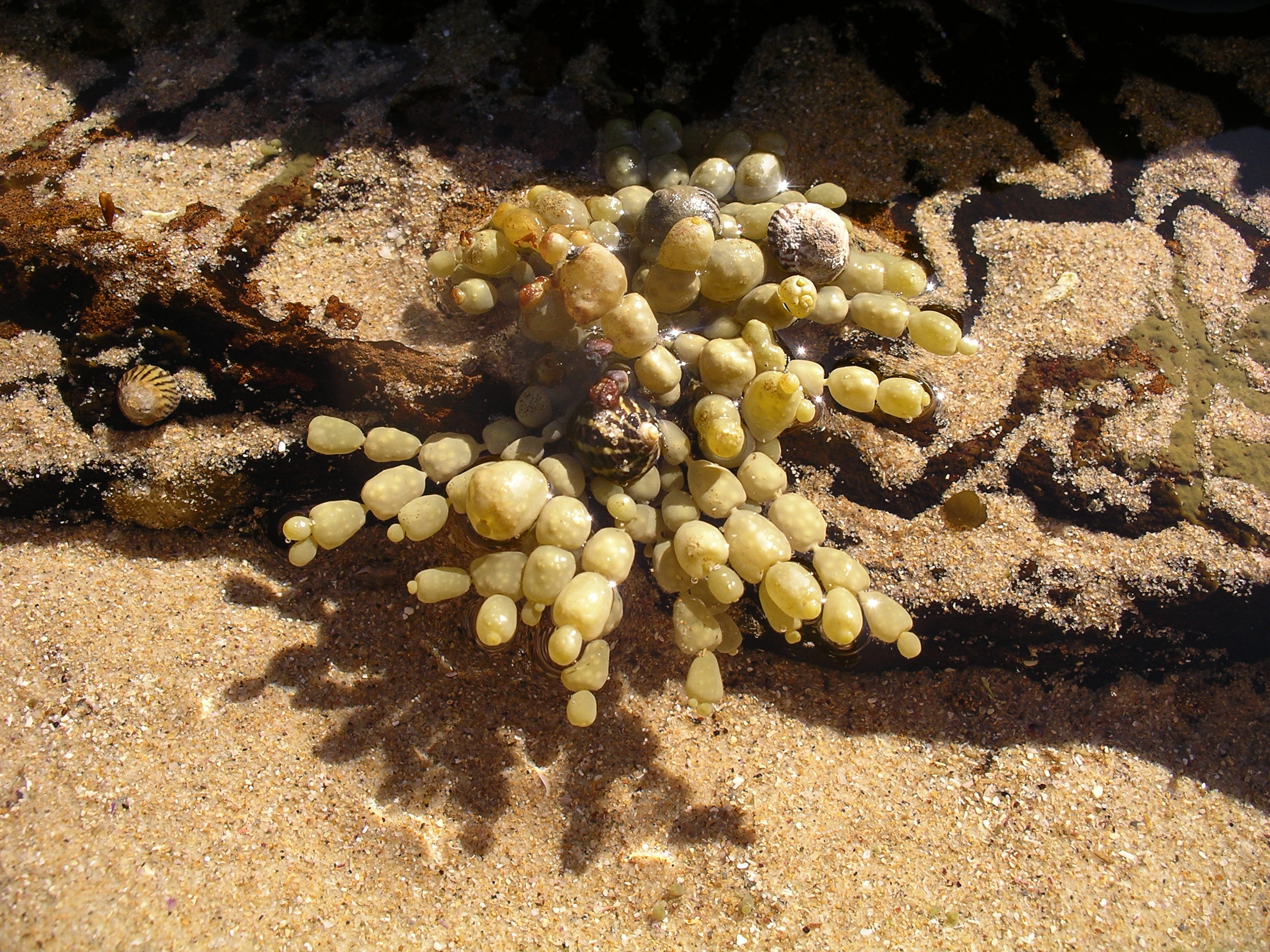Introduction

Intertidal rocky shores are located at the base of rocky headlands. They contain a huge variety of plants and animals that are able to survive in a harsh environment.
Animals
Some of the main animals species include limpets, barnacles, perriwinkles, cunjevoi and sea stars.
Plants
Interesting plants include coralline algae, neptunes necklace, kelp, strap weed and sea lettuce.
Location

Intertidal rocky shores are located all around Australia’s vast coastline in a variety of different forms.
Types of rocky shores
Some are flat and horizontal (Norah Head, Bateau Bay), some consist of boulders (Copacabana) and others are highly contorted and fractured with steeply dipping strata (Seal Rocks).
Google Earth
An example of an Intertidal ecosystem lies in the area around Copacabana Beach on Google Earth. To move out of street view level and look at the wider area click the yellow person icon in the bottom right hand corner.
Significance

Intertidal rocky shores contain interesting areas for exploration and education. They provide habitat for a huge variety of plants and animals that are uniquely adapted to a harsh physical environment that includes strong wave action, fluctuating weather conditions and changes in the tide.
Microhabitats
Each tiny crack or crevice can contain its own micro habitat and the full extent of the relationships that exist between all these organisms is still being explored.
Conservation

Intertidal rocky shores have suffered a huge loss in biodiversity. Many animals such as crabs, sea squirts and sea urchins are taken by people for food and bait. Popular areas also suffer from habitat destruction through trampling of animals, overturning of boulders and pollution.
Aquatic reserves
In an attempt to solve pollution problems and halt the loss of biodiversity, aquatic reserves have been declared in the worst effected regions (mostly Sydney). Collection of seashore animals in these areas is strictly prohibited. In non-protected areas bag limits are enforced so that numbers of seashore animals that can be collected is restricted. Penalties apply if bag limits are broken.
Protective measures
Interpretative signs highlighting the importance of rock platforms and bag limits have also been erected to encourage people to behave responsibly. In Bouddi National Park (Central Coast) all marine life are protected by a Marine Extension.
Environmental education centres

Rumbalara Environmental Education Centre conducts Stage 2 programs at Copacabana Beach and Bateau Bay Beach (Wyrrabalong National Park). These programs focus on discovering rock platform ecology and conserving coastal environments.
More locations
Other Environmental Education Centres that provide access to intertidal rocky shores include:
-
Illawarra (South Coast)
-
Cascade (North Coast)
-
Georges River (South Western Sydney)
Further information

Weblinks
-
Visit the Rumbalara Environmental Education Centre's website.
-
Life on Australian seashores is an excellent website providing information on ecology, plants and animals of rocky shores.
-
NSW Office of Environment & Heritage – Types of protected areas
-
NSW Office of Environment & Heritage – Sydney Ocean Beaches
-
NSW Office of Environment & Heritage – Aboriginal use of the coast
-
QLD Department of Environment and Heritage Protection – Rocky shore
-
Marine Discovery Centre – Intertidal Rocky Shores
-
Marine Education Society of Australasia – Rocky Shores
Field Guides
Graham J. Edgar, Australian Marine Life: the plants and animals of temperate waters, Reed New Holland, 2000.
Keith Davey, A Photographic Guide To Seashore Life Of Australia, New Holland, 1988.